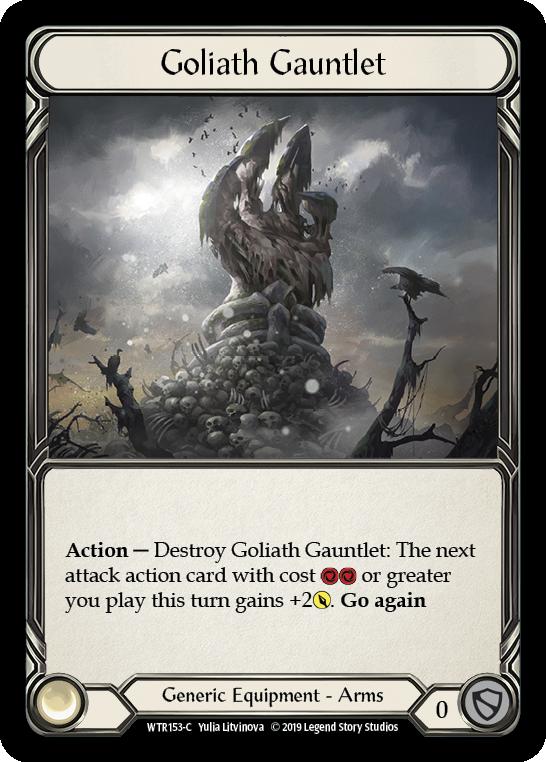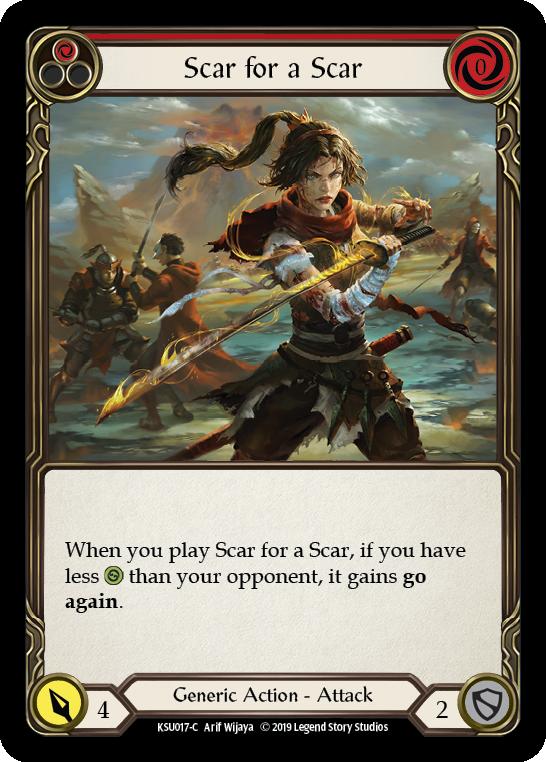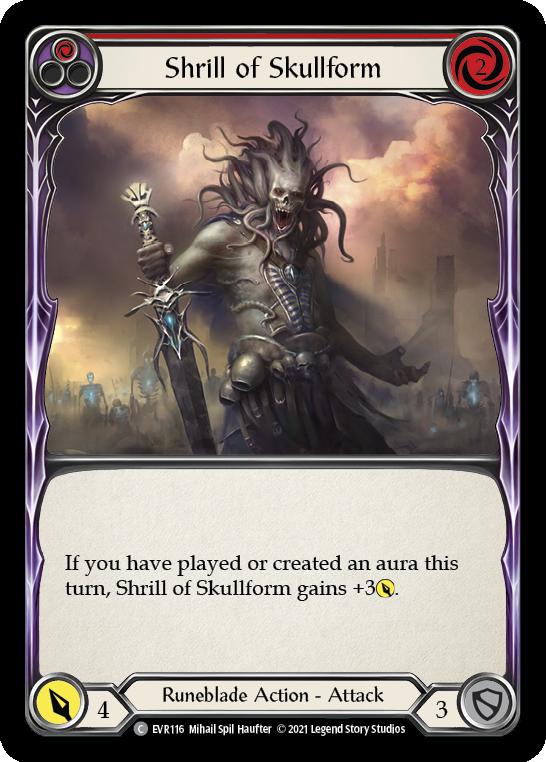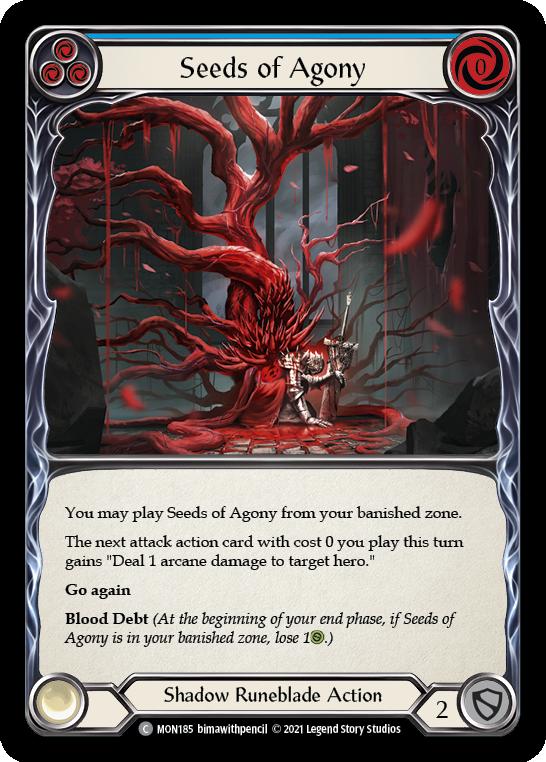The Commoner Club: Enter the Rune Gate with Vynnset
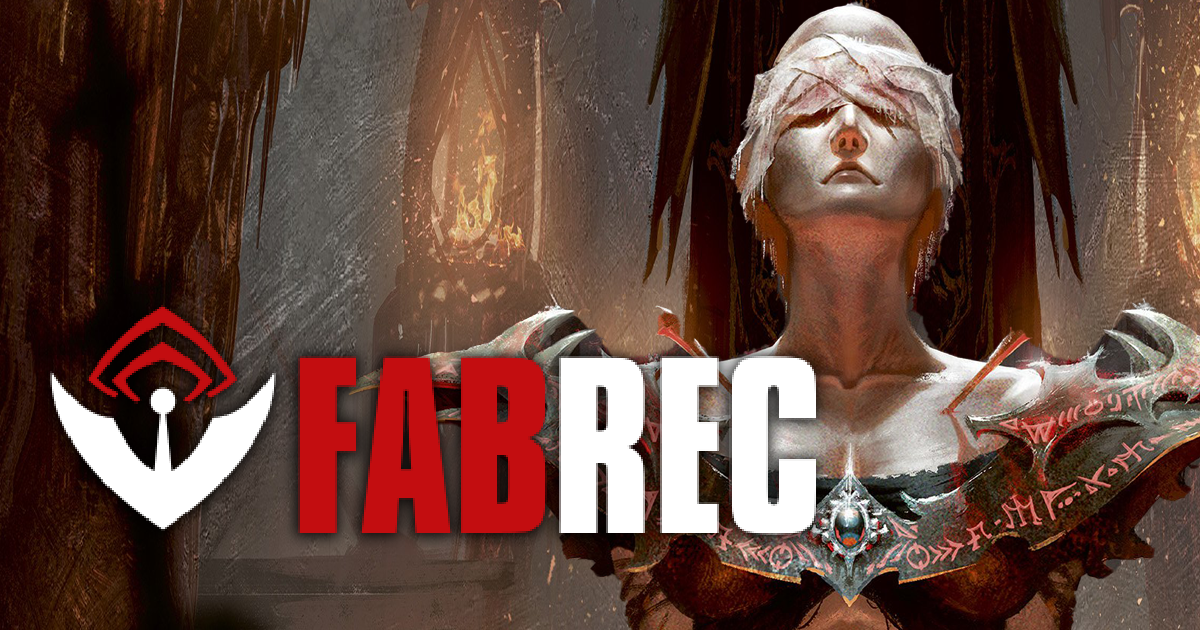
(Vynnset | Art by Federico Musseti)
The Commoner Club is a series of articles focusing on the Commoner format, providing decklists, key cards, and how-to-play tips for each hero. The Club aims to provide a budget-friendly and easy-to-digest avenue to Flesh and Blood for those who wish to try out the game.
Shadow, Runeblade, And You
Flesh and Blood‘s Runeblade class is characterized by powerful, explosive plays which utilize several procs of Runechant to whittle down the opponent with arcane and physical damage, while the Shadow talent seeks for power at any cost.
In Commoner, card choices are cut down to the barest of bones, which forces creative deckbuilding restrictions for most classes. This is doubly true for Runeblade and Shadow, as there has only been one pure Runeblade hero in Viserai, while all other Runeblade heroes carry a talent, which means the card pool is further restricted.
Addressing Runeblade Issues
With the card pool dilemma, we find ourselves with a sparse card pool, which has been somewhat mitigated by an injection of exciting new cards from Flesh and Blood‘s latest set, Dusk Till Dawn.
Working with what we have, we see that Shadow Runeblade lacks common rarity cards with innate go again for both action and non-action type cards, which leads itself to a conundrum: do you spend the turn setting up, or do you just attack?
The lack of archetype-defining cards such as Mauvrion Skies, Funeral Moon, and Mordred Tide, which all generate Runechant, while allowing for an attack to be played is not a luxury we Commoners have, alas.
Even powerful equipment such as Grasp of the Arknight and Spellbound Creepers are no-gos for us. So to generate Runechants and go again, cards like Read the Runes and Lead the Charge are often utilized — or just be Chane and have go again at the cost of your deck.
Thus, we have established the inherent limitations of this unique class and talent combination, but that doesn’t mean we have to throw in the towel!
Hot Debut: Vynnset
The newest Shadow Runeblade hero in Flesh and Blood, Vynnset is meant to follow in Chane’s footsteps in Classic Constructed, after the latter was banished to Living Legend status.
Vynsett’s ability requires us to banish a card from our hand at the start of our turn to create a Runechant. Chane offsets the inherent lack of go again with his ability, while Viserai generates the pingers naturally. Meanwhile, Vynnset starts her turn with one less card in her hand, in exchange for action-point free generation of a Runechant – so how do we make the most of this ability?
Enter the Rune Gate
Starting the turn with one fewer card in hand means we have fewer cards to pitch, and should we need to block with three cards in hand, then we’re sick out of luck, as Vynnset’s ability is mandatory, so we’re skipping our turn – and we might even take damage if we draw into four Blood Debt cards. How do we solve this problem?
A new mechanic, Rune Gate allows us to play cards for free from the banished zone, as long as we have enough Runechants equal to or more than the card’s resource cost. Pair this up with other cards that can be played from banish, and we’re still essentially playing with a four-card hand!
Seeing Red
Experimenting with Vynnset – albeit with little access to cards, due to the nature of prereleases and limited playtime – I present a redline list, which keeps card costs low-to-the-ground and allows the deck to function almost resourceless.
I’ve found that committing all the new Blood Debt Rune Gate cards unfortunately clogs up our draws. With no significant way to generate Runechants, we’re at the mercy of taking several points of damage due to Blood Debt. Meanwhile, being forced to block match-defining cards such as Flying Kick, Breaking Point, a potential Pummel, or just a huge Wounded Bull leaves us with no choice but to not even be able to arsenal a card on our turn.
Thus, playing with as little pitch needed as possible, we can commit to an aggressive, but flexible, playstyle should we need to block out certain attacks – which are more backbreaking to Vynnset over other heroes in the format.
The deck then enjoys Vantom Wraith, which can be played as long as we have two Runechants. One comes from Vynnset’s ability, while the other can come from a Flail of Agony attack, or a Spellbalde Strike.
Bounding Demigon and Seeds of Agony play off of each other and are cheap ways to push damage even with few cards or resources.
Playing redline also allows us to utilize Snapdragon Scalers, which is one of the few ways to gain go again on our attacks.
Meanwhile, Meat and Greet is one of the few ways we can get go again in the deck. Remember: we can use Vynnset’s second ability after we play a non-action card to pay one life in exchange for an unblockable point of arcane damage, which puts the card online.
Piercing Shadow Vise and Shrill of Skullform are just above-rate cards that don’t require much setup for the deck.
Why No Aether Ironweave and Rune Gate 3?
From my testing of Vynnset in Commoner, Aether Ironweave becomes tricky to proc. Due to the lack of go again effects, it becomes even more difficult to find a window to make use of the two resources. Blossom of Spring lets us play Meat and Greet red and Spellblade Strike, which facilitates a smoother game plan.
The online community has started shortening Rune Gate effects to RG[r], where r is the resource cost of said card. In this case, the lack of RG3 such as Vantom Banshee and Rift Skitter are conscious deckbuilding decisions – we have no meaningful way to generate three Runechants unless we skip a turn, and even then, what guarantees us we draw into the RG3 card? Most times, I find that banishing the card and setting up on the current turn just means we’re taking one Blood Debt for a measly payoff, when we could just attack on both turns.
Finally, it must be noted that Rune Gate cards cannot be paid for by resources while they’re in the banished zone, so having these cards stuck there means we’ll be taking continued damage. This one Runechant difference makes or breaks the deck. Observing other Vynnset deckbuilders, they’ve also gravitated towards RG2 cards, which exist in other rarities, for the exact same reasons, although they have better access to two Runechants through Grasp of the Arknight.
Why did we exclude the bane of many a Flesh and Blood player, Rosetta Thorn? Simply put, it costs a resource and requires us to play an action card – which, again, have limited go again options. This also doesn’t set up for our next turn. However, this sword might still just be a strong enough card on its own to warrant inclusion.
On the other hand, Flail of Agony accelerates our game plan and lets us start with two Runechants for the next turn (one from a Flail hit which rarely gets blocked, plus Vynnset’s ability), which means we can potentially activate Vantom Wraith while blocking with up to three cards.
The Deck
Vynnset presents an interesting deckbuilding and playstyle restriction that is exciting for deckbuilders of all approaches. I’m currently experimenting with a full on defense reaction deck, which aims to pop more Runechants that can be Arcane Barriered through, plus just a goodstuff deck – but that feels like we’re just playing a worse Chane or Viserai.
I’ll be excited to see how we develop Vynnset the following weeks after Dusk Till Dawn releases.
Welcome to the Club!
" The Commoner Club: Redline Vynnset"





